Gorenje RF3183 Handleiding
Bekijk gratis de handleiding van Gorenje RF3183 (10 pagina’s), behorend tot de categorie Koelkast. Deze gids werd als nuttig beoordeeld door 69 mensen en kreeg gemiddeld 4.5 sterren uit 35 reviews. Heb je een vraag over Gorenje RF3183 of wil je andere gebruikers van dit product iets vragen? Stel een vraag
Pagina 1/10

Instructions for Use14
Refrigerator - Freezer EN
Thank you for your trust and for buying this appliance. We hope it will
successfully serve the purpose for many years.
Refrigerator with freezer is for domestic use
only.
The lower part of the appliance is
refrigerator and is used for storing fresh foods
at the temperature of 0°C and higher.
The upper part is freezer and is used for
freezing fresh foods and storing frozen foods
for longer periods of time (up to one year,
depending on the kind of foods you store). The
compartment is marked with four stars.
Before Putting Into Use...................... 14
Instructions for Use
We Care for the Environment
Tips for Energy Savings
Important ............................................ 15
Storing Time During Power Supply
Interruption
Disposing of the Worn Out Appliance
Placing and Installation ..................... 16
Choosing the Right Place
Placing the Self-Standing Appliance
Connection to Power Supply
Description of the Appliance ............. 17
Operation Control .............................. 17
Temperature Selection
Use........................................................ 18
Freezing Fresh Foods
Storing Frozen Foods
Defrosting Frozen Food
Ice Making
Changing the Direction of Opening the
Door ..................................................... 20
Maintenance and Cleaning ................ 21
Automatic Defrosting of the Refrigerator
Manual Defrosting of the Freezer
Cleaning the Appliance
Switch Off the Appliance When Not In Use
Trouble-Shooting Guide..................... 22
Before Putting Into Use
• Before connecting the appliance to the mains
supply, leave it stand for about 2 hours,
which will reduce a possibility of malfunctions
in the cooling system due to transport
handling.
• Clean the appliance, and be thorough,
especially in the interior (See Cleaning and
Maintenance).
• In case the interior accessories are not
correctly placed, rearrange them as
described in chapter Description of the
Appliance.
Instructions for Use
These instructions for use are intended for the
user. They describe the appliance and its
correct and safe use. They were prepared for
various types of refrigerators therefore you
might find in it description of some functions
and accesories that your appliance does not
include.
We Care for the Environment
• Our products use environmentally friendly
packaging, which can be either recycled or
disposed of in an environmentally friendly
manner. To this end, individual packaging
materials are clearly marked.
• These instructions are printed either on
recycled paper or chlorine free bleached
paper.
• When your appliance finally wears out,
please try not to burden the environment with
it; call your nearest authorised service agent.
(See Disposing of the Worn Out Appliance).

Instructions for Use 15
Tips for Energy Savings
• Try not to open the door too often, especially
when the weather is wet and hot. Once you
open the door, mind to close it as soon as
possible. This is especially important if you
have an upright model.
• Every now and then check if the appliance is
sufficiently ventilated (adequate air
circulation behind the appliance).
• Use higher thermostat settings only when
required or recommended.
• Before loading the appliance with packages
of fresh foods, make sure they are cooled to
ambient temperature.
• Ice and frost layer increase energy
consumption, so do clean the appliance as
soon as the layer is 3-5 mm thick.
• If the gasket is damaged or if it turns out that
the sealing is poor, the energy consumption
is substantially higher. To restore efficiency,
replace the gasket.
• The condenser on the rear wall should be
always clean, free of dust or any impurities.
• Always consider instructions stated in
sections Positioning and Energy Saving Tips,
otherwise the energy consumption is
substantially higher.
Important
• If you have bought this appliance to replace
an old one equipped with a lock that cannot
be opened from inside (lock, bolt), make sure
that the lock is broken. This will make it
impossible for children to lock themselves
inside the appliance and suffocate.
• The appliance must be correctly connected
to the mains supply. (see: Connecting to the
Mains Supply).
• Do not touch the cooled surfaces while the
appliance operates, especially not with wet
hands, because the skin may stick to the
cold surfaces.
• Do not freeze bottles containing liquid,
especially not soft drinks, such as mineral
water, sparkling wine, beer, cola etc.,
because liquid expands during freezing and
the glass bottle is very likely to blow up.
• Do not eat frozen food (bread, fruit,
vegetables), because you can get frostbites.
• If the food has strange smell or color, throw it
away, because it is very likely that it is
spoiled and therefore dangerous to eat.
• Disconnect the appliance from the power
supply before repairing it (only a qualified
technician should repair it), before cleaning
and before replacing the light bulb.
• Do not defrost the appliance with other
electric devices (hair dryer etc.) and never
scrape the ice or frost layer with sharp tools.
Use only enclosed tools or tools
recommended by the manufacturer.
• For the sake of environment protection - be
careful not to damage the rear wall of the
appliance (the condenser unit or the tubes -
for example when moving the appliance) or
any part of the refrigerating system inside the
appliance.
• The refrigerating system of the appliance is
filled with refrigerant and oil, so when the
appliance is damaged, handle it with care
and dispose it of in compliance with
environmental protecting precautions. (See
We Care for the Environment).
• Heating element incorporated in the
appliance, all around the rim, is controlled by
the operation of the compressor and it
prevents the door gasket to freeze on to the
freezer housing.
• If the supply cord is damaged, it must be
replaced by the manufacturer or his service
agent or a qualified person in order to avoid
hazard.
• The rating plate is inside the appliance or
outside on the rear wall.
The symbol on the product or on its
packaging indicates that this
product may not be treated as
household waste. Instead it shall be
handed over to the applicable collection
point for the recycling of electrical and
electronic equipment. By ensuring this
product is disposed of correctly, you will
help prevent potential negative
consequences for the environment and
human health, which could otherwise be
caused by inappropriate waste handling
of thisproduct. For more detailed
information about recycling of this
product, please contact your local city
office, your household waste disposal

Instructions for Use16
service or the shop where you purchased
the product.
Storing Time During Power Supply
Interruption
Do not open the freezer in case of failure or
power supply interruption! In case the
interruption is extended over longer period of
time (16 hours), take food out of the freezer
and use it, or make sure that is sufficiently
cooled (perhaps you have an extra appliance).
Disposing of the Worn Out Appliance
• When your appliance finally wears out,
dispose it of. If the appliance has a lock,
break it, in order to prevent eventual
accidents (danger of children get locked
inside the appliance).
The refrigerating system of the appliance is
filled with refrigerant and insulating
substances which should be separately
treated and processed. Call your nearest
authorised service agent or specialised
servicing centre. If you don't find one, contact
your local authorities or your distributor. Be
careful not to damage the tubes on the rear
wall of the appliance (danger of pollution).
Placing and Installation
Choosing the Right Place
Place the appliance in a dry and regularly
ventilated room. Allowed ambient temperature
depends on the model (class) of the appliance
and is stated on the rating plate of the
appliance.
Never place the appliance near heat emitting
devices (e.g. cooker, radiator, water heater or
similar devices) and do not expose it to direct
sunlight. The appliance should be positioned at
least 3 cm away from the electric or gas cooker
and at least 30 cm away from the oil or coal
stove. If this is not possible, use an appropriate
insulation.
Behind the appliance there should be free
space at least 200 cm² wide and above the
appliance the high kitchen units should be at
least 5 cm away from the appliance in order to
assure adequate ventilation of the condenser
unit.
Class Ambient temperature
SN (sub-normal) from + 10°C to + 32°C
N (normal) from + 16°C to + 32°C
ST (sub-tropical) from + 16°C to + 38°C
T (tropical) from + 16°C to + 43°C
Placing the Self-Standing Appliance
• Place the appliance firmly on a solid base
and if necessary level it with the two
adjustable feet, located on the front.
• The appliance with ventilation grid may be
placed close to the wall. The grid enables
sufficient air circulation, required for
adequate ventilation of the rear wall.
Connection to Power Supply
Connect the appliance with the cable and plug
to the power supply socket outlet with a ground
terminal (safety socket). Required nominal
voltage and frequency are indicated on the
rating plate. The connection to the mains
supply and earthing have to be made according
to current standards and regulations. The
appliance resists temporary voltage tolerance
up to -6 to +6 %.
Product specificaties
| Merk: | Gorenje |
| Categorie: | Koelkast |
| Model: | RF3183 |
Heb je hulp nodig?
Als je hulp nodig hebt met Gorenje RF3183 stel dan hieronder een vraag en andere gebruikers zullen je antwoorden
Handleiding Koelkast Gorenje
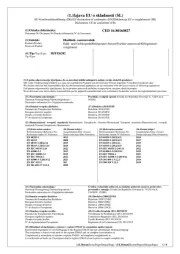
5 September 2025
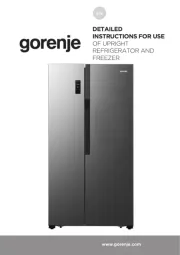
5 September 2025
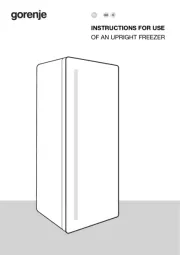
4 September 2025
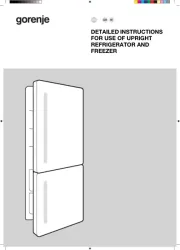
4 September 2025
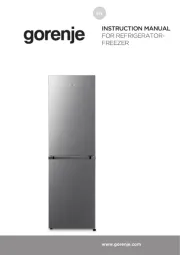
4 September 2025
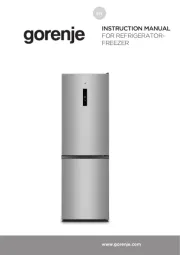
4 September 2025
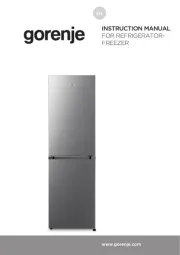
4 September 2025
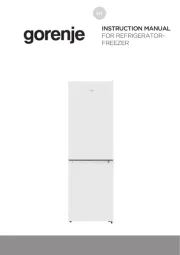
4 September 2025
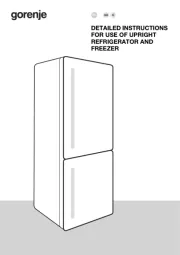
8 Augustus 2025
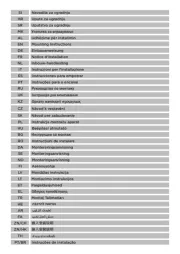
19 April 2025
Handleiding Koelkast
- Asko
- BEKO
- Lavor
- Arktic
- Cata
- Temptech
- Costway
- AEG
- Brastemp
- Teka
- Rhino
- Master-Bilt
- Royal Catering
- Sheffield
- Vollrath
Nieuwste handleidingen voor Koelkast
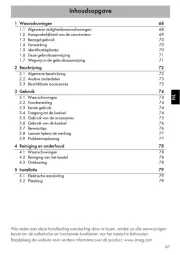
18 September 2025
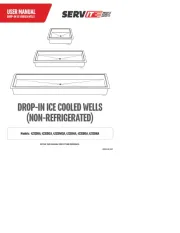
18 September 2025
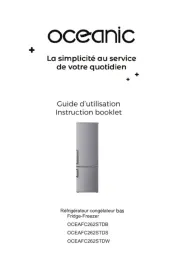
17 September 2025
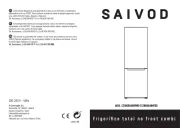
16 September 2025
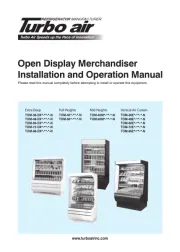
16 September 2025
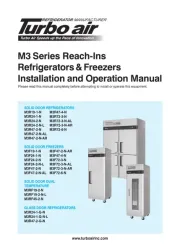
16 September 2025
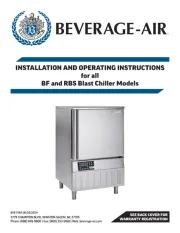
16 September 2025
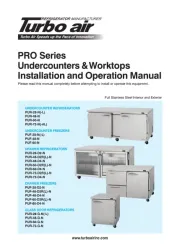
16 September 2025
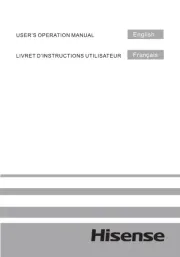
16 September 2025
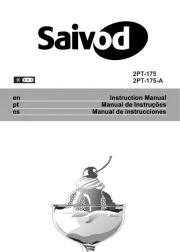
16 September 2025